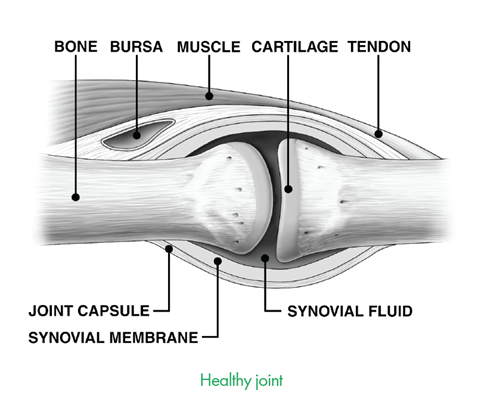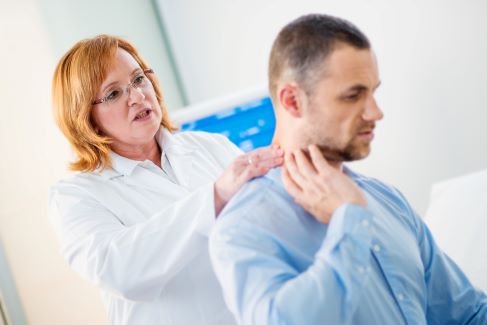Anatomy of Arthritis Pain
Get more familiar with the parts of the joint and how they can be affected by arthritis conditions and pain.
To better understand the different types of arthritis and the causes of pain, start by familiarizing yourself with the parts of a joint. Please click on the image below to view a larger version.

-
Joint: This is the place where two or more bones come together and motion occurs. Examples include shoulders, wrists, hips and knees. The bones in the spine also form joints, which may be involved in certain types of arthritis.
-
Cartilage: Joints have a thin cushioning layer called cartilage on the surfaces of the ends of bones. This cartilage is a shock absorber and provides a smooth surface for joint movement. Cartilage has no blood vessels or nerves. However, when it wears down, bone rubs against bone causing painful movement..
-
Joint capsule: Each joint has a casing surrounding it called a capsule.
-
Synovium: The joint capsule has a thin lining on its inner surface called the synovium. This lining makes joint fluid, which nourishes the cartilage and helps lubricate the joint.
-
Muscles, ligaments and tendons: These structures surround, support and protect the joints. When muscles tighten they pull on the joints, causing movement. Ligaments are the fibrous bands that attach bone to other bones. At the ends of muscles are the tendons, which attach muscle to bone.
-
Bursa: A bursa is a fluid-filled sack that cushions high-friction areas, such as between the tendons and bones in the shoulder, hip and knee.
Pain Generators in the Joint
Different types of arthritis affect different parts of the joint. For example, rheumatoid arthritis is primarily a disease of the joint lining (synovium). The main problems in osteoarthritis affect the cartilage and bone. The pain in arthritis comes from disease processes including inflammation and mechanical stresses that occur in these different parts of the joint. The areas of the joint where pain is coming from are called the pain generators.
Stay in the Know. Live in the Yes.
Get involved with the arthritis community. Tell us a little about yourself and, based on your interests, you’ll receive emails packed with the latest information and resources to live your best life and connect with others.


